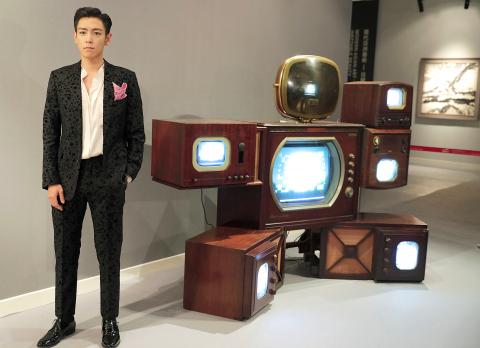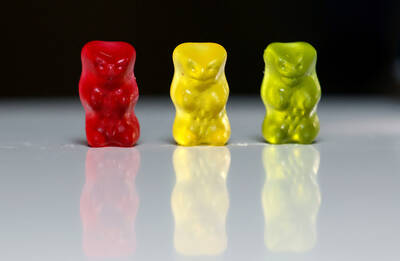After triggering a pop of electricity by touching a screwdriver to metal in a disassembled cathode ray tube monitor, Lui Chi-tien issued a warning to visitors gathered in his cluttered workshop on a recent Friday morning. “That voltage doesn’t kill you,” he said. “But it really hurts you.”
For the record, Lui, 75, was unharmed. He carried on with his lesson about how to remove a circuit board, then opened it up to hands-on participation. The students in his shop, CTL Electronics, in Tribeca, were from an art conservation program at New York University. They were studying electronic art, including works by pioneering Korean-born artist Nam June Paik, and their professor had arranged a half-day session with Lui, a technician with whom Paik had a long association.
When Lui started CTL Electronics in 1968, he was at the vanguard of an artistic revolution. He began the business intending to install and repair video systems for businesses, universities and private clients. But around then, Sony released the Portapak, which for the first time put portable video-camera technology into the hands of consumers — and artists. Lui shifted to embrace the nascent medium.

Photo: AP/ Vincent Yu
During Lui’s nearly half-century career, his clients have included Andy Warhol, Bruce Nauman and Paik, whom he met in 1969 when the artist brought in a video camera for repair.
Today, Lui’s workshop on Murray Street is stuffed to the pressed-tin ceiling with thousands of vintage televisions, video cameras, VCRs and other equipment. With the advent of digital devices and smartphones that capture and distribute video with the tap of a finger, Lui has been fortunate to segue into conservation, providing the components and technical know-how to maintain analog-based artwork.
One such work is Paik’s 1963 piece Zen for TV, included in the Museum of Modern Art exhibition From the Collection: 1960–1969, on view through March 12. He is also sharing his knowledge with conservators and students to keep such works alive in the future.
“Very few people know how to work with those materials now,” Raphaele Shirley said of the obsolete technology. An artist, she was an assistant to Paik, who died in 2006, and now works with Lui on conservation projects. “He has the ability to understand the perspective of museums and artists,” she added. “That’s a really rare quality for a technician.”
That quality has made Lui a sought-after teacher for those working in time-based media conservation, a relatively new discipline that focuses on technology-dependent artwork.
PRESTIGIOUS RESUME
Lui has worked with numerous institutions, including MoMA, the Whitney Museum of American Art and the Solomon Guggenheim Museum. In September, he taught at the Smithsonian American Art Museum, in Washington, at the invitation of the museum’s media conservator, Dan Finn, who was eager to study old-fashioned TV maintenance and repair.
A highlight for Finn was learning how to replicate Paik’s Zen for TV. The piece is deceptively simple: a TV turned on its side that displays no more than a vertical slice of silvery light in the center of the screen.
“You’d almost worry that that sort of unveiling of a trick behind an artwork is sort of akin to revealing the secret behind a magic trick, and that maybe it loses something,” Finn said. He found the opposite to be true. “It almost made the work more impressive.”
Born in Chongqing, China, in 1941, Lui moved with his family as a teenager to Taiwan, where he trained as an electrician. He also took classes in television repair, which was challenging, since he had never actually seen a working TV. “The only thing on the screen was snow,” he said. “So we were repairing TVs, pretending there was a broadcast.”
He saw his first broadcast in 1960, when the ship he worked on as an electrician for the Taiwanese merchant marine arrived in Los Angeles. At 19, while docked in Baltimore, Lui jumped ship and headed to New York City, where he got a TV-repair job in the Bronx and later enrolled in technical school. “I didn’t even know English,” he said. “But I knew diagrams.”
In 1965, he married an American woman, a painting teacher at Bellevue hospital, whom he met while recovering from tuberculosis. Eventually, he found work designing and servicing video systems. As his reputation grew, Lui decided to start CTL Electronics, working at first out of the couple’s Reade Street loft, then opening a shop on West Broadway, where he sold video cameras, equipment and supplies. Artists were frequent customers.
In the US, only a small number of schools offer training in time-based media conservation. At NYU, Hannelore Roemich, a professor of conservation science, and Christine Frohnert, the art conversation professor who took her students to Lui’s shop, are developing a graduate specialization, part of the 2018 curriculum, that will be the first of its kind in the nation.
Compared with traditional art conservation, which deals with, say, restoring Impressionist masterworks or Renaissance sculpture, Lui’s work is more demanding. “It becomes so much more difficult when it has a plug,” is how Frohnert put it. It is crucial, she said, for conservators to forge relationships with experts in related fields, like Lui.

The canonical shot of an East Asian city is a night skyline studded with towering apartment and office buildings, bright with neon and plastic signage, a landscape of energy and modernity. Another classic image is the same city seen from above, in which identical apartment towers march across the city, spilling out over nearby geography, like stylized soldiers colonizing new territory in a board game. Densely populated dynamic conurbations of money, technological innovation and convenience, it is hard to see the cities of East Asia as what they truly are: necropolises. Why is this? The East Asian development model, with

June 16 to June 22 The following flyer appeared on the streets of Hsinchu on June 12, 1895: “Taipei has already fallen to the Japanese barbarians, who have brought great misery to our land and people. We heard that the Japanese occupiers will tax our gardens, our houses, our bodies, and even our chickens, dogs, cows and pigs. They wear their hair wild, carve their teeth, tattoo their foreheads, wear strange clothes and speak a strange language. How can we be ruled by such people?” Posted by civilian militia leader Wu Tang-hsing (吳湯興), it was a call to arms to retake

This is a deeply unsettling period in Taiwan. Uncertainties are everywhere while everyone waits for a small army of other shoes to drop on nearly every front. During challenging times, interesting political changes can happen, yet all three major political parties are beset with scandals, strife and self-inflicted wounds. As the ruling party, the Democratic Progressive Party (DPP) is held accountable for not only the challenges to the party, but also the nation. Taiwan is geopolitically and economically under threat. Domestically, the administration is under siege by the opposition-controlled legislature and growing discontent with what opponents characterize as arrogant, autocratic

Desperate dads meet in car parks to exchange packets; exhausted parents slip it into their kids’ drinks; families wait months for prescriptions buy it “off label.” But is it worth the risk? “The first time I gave him a gummy, I thought, ‘Oh my God, have I killed him?’ He just passed out in front of the TV. That never happens.” Jen remembers giving her son, David, six, melatonin to help him sleep. She got them from a friend, a pediatrician who gave them to her own child. “It was sort of hilarious. She had half a tub of gummies,